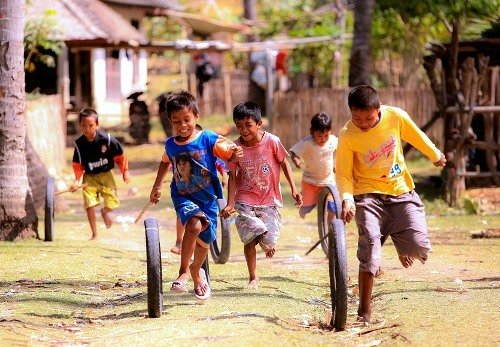Dia del Nino (National Children's Day). In Bolivia, as in many developing countries, the number of children who are experiencing exploitation and poverty is very high, up to 90% according to recent Millennium Foundation data. This means that in order to survive children must begin working at a very early age, some as early as 5 years old. Some children wash windshields or sell candies on some of the busiest intersections while other children do heavy labor in mines, at construction sites, or harvesting crops such as sugar cane, even though it is illegal to employ minors for these types of jobs.
In addition, education and health are deficient and do not cover all children, even though some infant and child health insurance programs and bonuses to encourage children to attend school have been created. If we add to this the violence that many children suffer, such as physical and sexual mistreatment against minors, the panorama for Bolivian children isn’t exactly encouraging. And this situation is repeated throughout South America.
To this end, on April 12, 1952 the Organization of American States (OAS) and the United Nations Children's Fund (UNICEF) drafted a joint Universal Declaration on the Rights of Children, a document that establishes which rights children have and how those rights must be protected. It asked each country to declare a Children's Day (Dia del Nino) to help create awareness among the population regarding the problems children face and what can be done. Bolivia selected April 12th, the same day on which the Declaration was drafted, and Dia del Nino has been celebrated here since 1955.
Since then, each year all children up to 12 years old celebrate in their schools and participate in extracurricular activities as well. At each school, bulletin boards or murals are hung to inform and remind children of their rights and their teachers and/or parents celebrate with snacks and small gifts. The nation's President, the Governors of each department, the Mayor’s offices, the Permanent Human Rights Assembly, the Public Defender of Children and Adolescents, and other institutions that work with or for children take part in recreational and awareness activities, festivities, sporting events, theater, or give out scholarships, etc.
Congress allows children to session during one day and children take part in a Children's Parliament in which they debate issues that affect them directly and make suggestions as to how society and authorities can better attend to their needs.

Español
En Bolivia, como en muchos países en vías de desarrollo, la cantidad de niños en situaciones de explotación y pobreza es muy elevada, llegando al 90% según datos mas recientes de la Fundación Milenio. Esto obliga a que los pequeños, para sobrevivir, empiecen a trabajar desde edades tan tempranas como los 5 años, limpiando vidrios o vendiendo caramelos en las intersecciones de las avenidas más concurridas, mientras que los de más edad ya participan en tareas pesadas como en las minas, la zafra de la caña y la construcción, pese a estar penado por ley que un menor sea empleado en tales faenas.
Por otra parte, la educación y la salud aun son deficientes en su cobertura a los más pequeños, pese a la creación de seguros de salud infantiles y bonos de fomento a la escolaridad. Si a esto añadimos la violencia contra ellos, los datos de maltrato físico y sexual a menores que maneja la Defensoría de la Niñez y Adolescencia, el panorama de la niñez boliviana no es precisamente alentador. Esta situación se ve repetida a lo largo y ancho del continente.
Es por este motivo que, el 12 de abril de 1952, la Organización de Estados Americanos (OEA) y el Fondo de las Naciones Unidas para la Infancia (UNICEF) redactaron de manera conjunta la Declaración de Principios Universales del Niño, un documento que establecía los derechos de estos y pautas para su protección. Cada país miembro debía declarar un Día del Niño, en el que se concienciaría a la población sobre la problemática de la niñez y qué hacer al respecto. Bolivia eligió la misma fecha de la declaración, el 12 de abril, que se empezó a celebrar en el país a partir de 1955.
Desde entonces, llegado el día, todos los pequeños hasta los 12 años festejan en sus escuelas y en actos fuera de ellas. En cada unidad educativa, realizan murales que recuerdan sus derechos, los maestros y/o padres les agasajan con refrigerios y pequeños regalos. La Presidencia de la nación, la Gobernación de cada departamento, las Alcaldías, la Asamblea Permanente de Derechos Humanos, la Defensoría de la Niñez y Adolescencia, y demás instituciones que trabajan con o para la niñez realizan actividades de recreo, concienciación, festejos, juegos deportivos, teatro, becas, etcétera.
El Congreso les permite sesionar durante un día en sus instalaciones, donde los menores realizan un Parlamento Infantil en el que debaten temas que les conciernen directamente, y hacen sugerencias sobre cómo la sociedad y las autoridades pueden atender sus necesidades.
Corresponsal/Correspondent Alura Gonzales